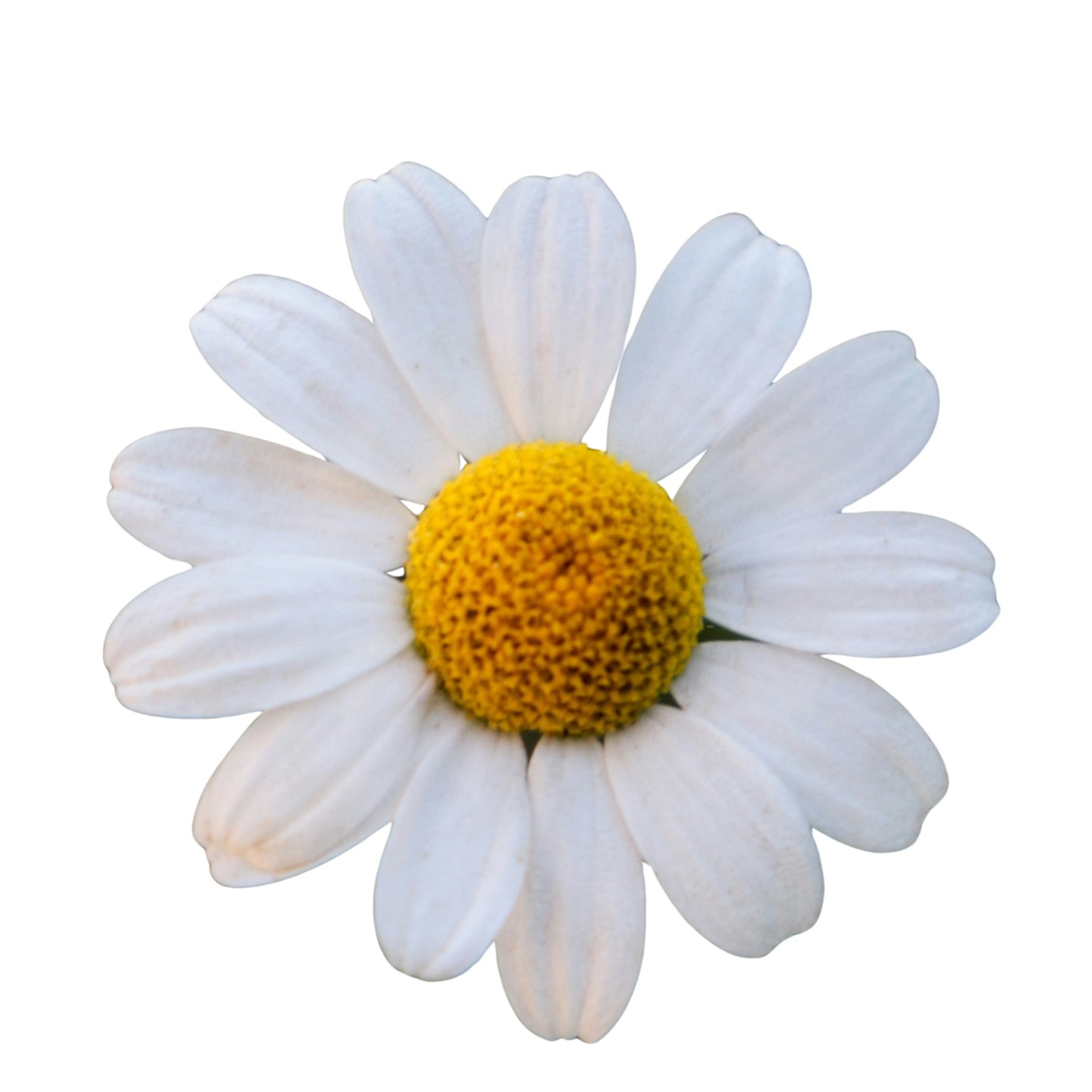JONQUIL
Roman Chamomile - 0.1 Gram
Roman Chamomile - 0.1 Gram
Couldn't load pickup availability
Roman Chamomile is a low-growing, perennial herb known for its delicate, daisy-like flowers and sweet, apple-like scent. It’s often grown as a ground cover, in herb gardens, or between pavers for its soft texture and pleasant fragrance. Unlike its annual cousin German chamomile, Roman chamomile spreads by creeping stems and returns each year.
Height 10–30 cm
Spread 30–40 cm
Foliage Finely divided, feathery, and bright green
Flowers Small (2–3 cm), white petals with yellow centers, blooming in summer
Fragrance Mildly sweet, apple-like scent from both foliage and flowers
Uses Herbal teas, ground cover, aromatherapy, pollinator-friendly gardens
Habit Low, mat-forming, and slightly trailing
It thrives in cottage gardens, pathways, rock gardens, and wildflower meadows, attracting bees and beneficial insects.
Growing Conditions
Sun Full sun to partial shade (best flowering in full sun)
Soil Light, sandy, well-draining soil; tolerates poor soils well
pH Neutral to slightly acidic (6.0–7.0)
Watering Moderate; prefers evenly moist soil but tolerates short dry spells once established
Spacing 20–30 cm apart
Roman chamomile tolerates foot traffic lightly and works well as a living mulch or lawn alternative in low-traffic areas.
Sowing Instructions
When to sow
Indoors 6–8 weeks before the last frost
Outdoors After last frost in spring or late summer for autumn growth
Seed depth Surface sow – press seeds lightly into the soil without covering; they need light to germinate
Germination temperature 15–20°C
Germination time 10–14 days
Transplanting When seedlings are 5–7 cm tall and risk of frost has passed
Spacing 20–30 cm apart to allow for spreading
Propagation alternatives Can also be propagated by division or cuttings in spring or autumn
Common Pests & Problems
Roman chamomile is generally low-maintenance and pest-resistant, but here are some issues to watch for
Pests
Aphids May cluster on stems or flower buds – rinse off or use neem oil
Thrips Can cause silvery streaks or flower distortion – use insecticidal soap
Leaf miners Create trails in leaves – remove affected foliage
Slugs and snails May nibble young plants – use barriers or traps
Diseases
Powdery mildew Appears in humid conditions – improve air circulation and avoid overhead watering
Root rot From overwatering or poor drainage – plant in well-draining soil and water only when topsoil dries
Botrytis (grey mold) Fungal disease in wet, crowded conditions – remove affected parts and increase spacing
Share


